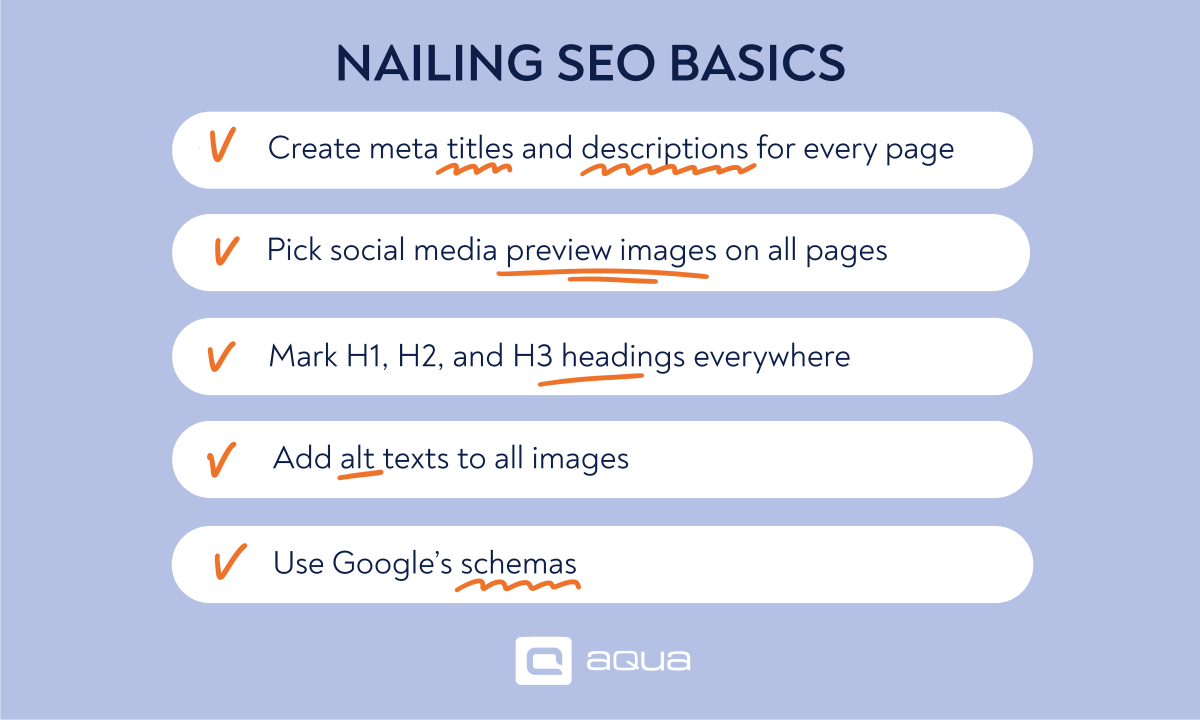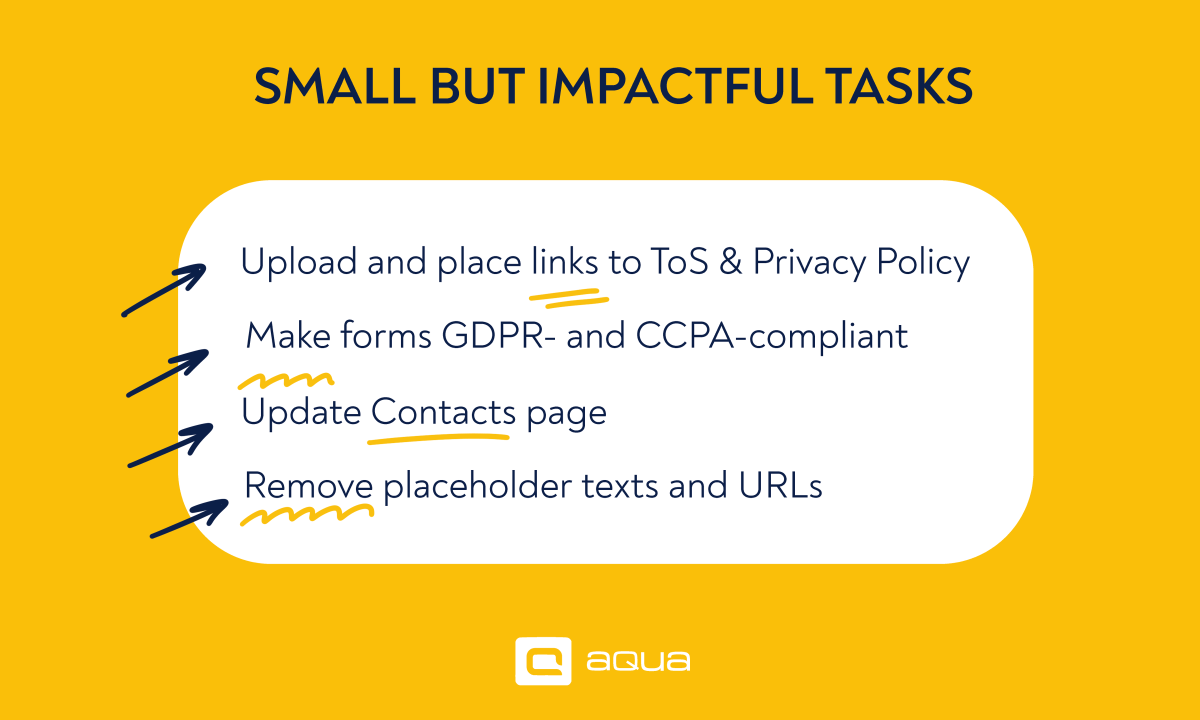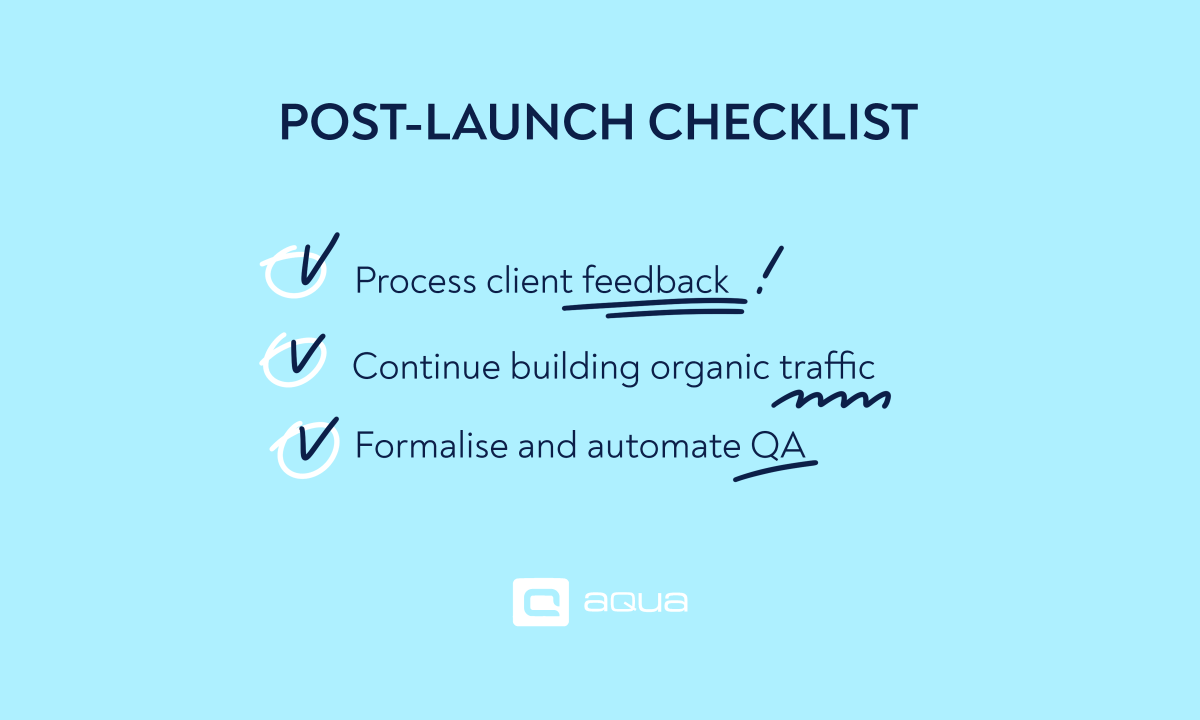Pre-launch checklist
Below are essential items to complete in the weeks before the launch. And for those who are intrigued, there is a video available that provides an in-depth exploration of the website launch steps.
- Nail your SEO from day one. Search visibility can make or break your launch—and Google’s gotten pickier in 2025. Throw automated SEO scanning into your build process early, not as an afterthought.Set up tools like Screaming Frog or SEMrush to automatically flag missing meta descriptions, broken canonical URLs, and accessibility gaps after each update. WCAG compliance isn’t just nice-to-have anymore as it directly impacts rankings.Start with a simple automated audit that runs weekly. Sites using continuous SEO monitoring see nearly double the organic traffic growth compared to those doing manual quarterly checks.This way, you catch technical issues before they tank your launch instead of scrambling to fix them when you’re already live.

- Install an SSL certificate. They will tell your user’s browser that it is safe to use the website. These certificates are cheap and often free, and you can’t afford to forget them. Otherwise, visitors would have huge security warnings and not know or risk bypassing them. That would be an unfortunate way to waste early traction after otherwise good preparation.
- Consider hiding ownership from the WHOIS Lookup. This tool allows anyone on the internet to find out who is behind the domain. Unless you are going through this pre website launch checklist to start a company-registered website, keep your privacy and opt out of this disclosure. It is simple and free; most domain registration services offer that functionality by default.
- Verify Google tools setup. Make sure that your analytics function correctly. Install Google Tag Manager to track basic website events (e.g. new user signup).
- Speed up your site or watch visitors bounce. You need pages loading under 3 seconds, period. Shoot for a Core Web Vitals score above 85, but set up automated performance gates in your deployment pipeline that literally stop slow code from going live. Run Google Lighthouse right now and flag any images over 500KB – they’re usually the biggest culprits. E-commerce sites especially can’t mess around here; anything slower than 2 seconds and you’re hemorrhaging both rankings and sales.
Don't Overlook Accessibility
Accessibility isn’t optional anymore. It’s what separates amateur sites from pro ones in 2025. You need to run your site through an accessibility checker before going live. Tools like WAVE or axe DevTools will catch most WCAG violations in minutes, not hours. Focus on three quick wins: add alt text to images, ensure your color contrast passes standards, and test keyboard-only browsing through your forms.
Accessible sites actually load faster and rank better. Google’s algorithm heavily weighs accessibility compliance, and sites that pass basic checks see traffic increases of nearly 40%. Start with automated testing, then have someone actually try using your site with a screen reader. Companies facing accessibility lawsuits jumped 320% last year, but proper testing takes maybe two hours and saves thousands in legal headaches down the road.
Proven QA solution to complete checklist before launching a website
Launch checklist
These are the items that you will be ticking off the new website checklist shortly before or during the launch.
- Verify that the website performs its key functionality. If you are launching a store, complete the signup yourself and place an order. Your testers should have caught any issues earlier, but it doesn’t hurt to check and may hurt if you don’t.
- Upload ads to where you will be serving them. Google and Facebook generally take around 24 hours to approve ads. You should still leave some buffer for potential corrections or them taking longer than usual, especially if you’re a new advertiser.
- Create UTM links and validate traffic source breakdown. In 2025, Google Analytics 4 should tell where users are coming from most of the time. UTM links, however, are extremely helpful if you are seeding lead magnets or using influencers to attract users. Knowing which channels worked better will help you beyond the initial push.
- Make the website indexable. Upload the robots.txt file to your server so Google can discover your website and help others do so. Use webmaster tools to manually get listed on Google, Bing, and any other relevant search engine rather than wait for them to stumble upon you.
- Make your website compliant with the law to avoid fines. Start by finding out which online privacy legislations apply to you. You’ll most likely need to display a GDPR Privacy Policy, a banner to collect user consent to trackers, and Terms and Conditions to protect your business best.
- Do the small yet vital housekeeping:

- Configure scalable web hosting. A website launch can go too well, meaning your fixed server capacity won’t handle the initial demand. On the contrary, it would be extra frustrating to pay for a higher number of visitors than you end up getting. If you’re not hosting in-house, going with a provider that can react to demand spikes (and drops) is your best way to save money.
Post-launch checklist
These are just some ideas for activities to maintain and improve your website:
- Collect and process client feedback. You can’t have possibly covered every desired use case, and there are also niche user scenarios that may have slipped past your QA. Going through early feedback swiftly will help both your bottom line and customer goodwill.
- Keep growing your organic reach. Focus on content that actually solves problems – then refresh it when search trends shift. Set up a monthly content audit (even a simple one works), throw in email capture from day one, and link all your social accounts. Remember, nearly 40% of sites see traffic jumps after adding location-specific pages, so consider local optimization or multilingual options if you’re eyeing international visitors.
- Keep quality checks running after launch. Bugs multiply as your site evolves. Set up automated tests that run with every single update, then throw in a centralized dashboard that pulls together test results, user feedback, and performance data. When someone reports a broken checkout or slow loading times, your team spots it immediately instead of playing detective weeks later. Start by selecting one automated testing tool this week and integrating it into your deployment process.

Set Up a Website Maintenance Plan
Launching your website? That’s just step one. The real work starts now: keeping it running like clockwork takes ongoing attention.
Set up monthly check-ins to update plugins, refresh content, and hunt down broken links. Speed checks should happen quarterly (sites loading slower than 3 seconds lose nearly half their visitors). Don’t forget automated backups, weekly at a minimum.
Throw Google Analytics and a simple uptime monitor into the mix. They’ll flag issues before your users notice them. One unexpected benefit? Regular maintenance actually improves your search rankings over time. Start with a simple monthly calendar reminder today.
Conclusion
Showing a new website to the world can be a daunting prospect. Luckily, this is no different from other nerve-wracking avenues: going through a set of planned actions relieves the stress. Cookie-cutter website launch checklist templates are usually insufficient, but you can use them for inspiration and/or tune them to your needs.
Test management solution to launch websites stress-free


















